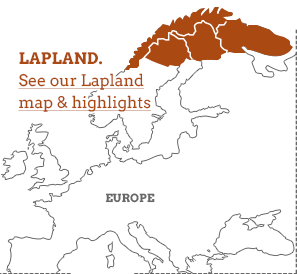Lapland’s clear character – laid-back, capable and amusingly deadpan – as well as its traditional cultural stamp is evident in every town and village it touches, but pinning it down geographically is tricky. For the original semi-nomadic Lappish, or Sámi, Lapland, which they call Sápmi, extends from Norway through Sweden and Finland to the Russian Kola peninsula where they have lived a traditional life for centuries tailing their reindeer herds from the bottom of valleys to the top of fells. Geography aside, it’s the vast and truly awesome wilderness and sense of huge skies so crisp and clear that you will only recall them from vivid dreams that makes Lapland such a magical destination.
![]()
A crisp white landscape of frost-tipped forest and frozen lakes by winter, revealing ancient woods, deserted islands and dramatic coastline under the summer sun, the pull of Lapland is both magical and undeniable.
![]()
Whichever part of Lapland you find your feet in, prepare for a world steeped in indigenous life and a natural playground of winter sports, never ending forest, gushing rivers and quirky villages sat high on hills. It’s wild and peaceful all at the same time; it’s the hunting ground for the elusive, otherworldly Northern Lights; and Father Christmas lives there too (just don’t mention the fact that he might not be real, the elves take it pretty badly).





























